
MECHANICS OF COMPOSITE MATERIALS
Scope & Guideline
Driving research in interdisciplinary material mechanics.
Introduction
Aims and Scopes
- Mechanical Behavior of Composites:
The journal emphasizes the investigation of mechanical properties such as tensile strength, fatigue, and impact resistance of various composite materials including fiber-reinforced and hybrid composites. - Failure Analysis and Damage Mechanisms:
A core aim is to explore the failure modes and damage mechanisms in composite materials under various loading conditions, including low-velocity impacts and cyclic loads. - Vibration and Dynamic Analysis:
Research on the vibrational characteristics and dynamic responses of composite structures is a significant focus, including studies on free vibrations, buckling, and damping behavior. - Multiscale Modeling and Simulation:
The journal promotes the use of multiscale modeling techniques to predict the mechanical behavior of composites, integrating microstructural effects with macroscopic performance. - Innovative Composite Design and Manufacturing Techniques:
There is a consistent focus on novel composite design approaches and manufacturing techniques, including additive manufacturing and optimization methods for enhanced performance. - Environmental and Sustainability Considerations:
Research addressing the sustainability of composite materials, including the use of recycled materials and eco-friendly composites, is also a vital area of interest.
Trending and Emerging
- Functionally Graded and Smart Composites:
There is a marked increase in research focused on functionally graded materials and smart composites that integrate sensors and actuators, showcasing the interest in multifunctional applications. - Additive Manufacturing and 3D Printing of Composites:
The emergence of studies on the 3D printing of composite materials reflects a growing trend towards innovative manufacturing techniques that allow for complex geometries and tailored properties. - Sustainability and Recycling in Composites:
Research exploring the sustainability of composite materials, including the use of recycled components and bio-based materials, is gaining momentum, aligning with global sustainability goals. - Nanocomposites and Hybrid Materials:
There is an increasing focus on the development and characterization of nanocomposites and hybrid materials that enhance mechanical properties and functional performance. - Numerical Simulations and Computational Mechanics:
The trend towards advanced numerical simulations and computational mechanics methods is evident, with more studies utilizing finite element analysis and other computational techniques to predict material behavior.
Declining or Waning
- Traditional Composite Materials:
There has been a noticeable decrease in publications focusing solely on traditional composite materials, as research increasingly shifts towards exploring advanced composites and hybrid materials. - Static Analysis without Dynamic Considerations:
Studies concentrating exclusively on static mechanical properties are waning, with a growing emphasis on dynamic and fatigue analysis in composite materials. - Basic Theoretical Models:
There is a reduction in research that relies solely on classical theoretical models for composite analysis, as more sophisticated computational and experimental methods gain traction.
Similar Journals

Composites and Advanced Materials
Empowering Research in Composite MaterialsComposites and Advanced Materials, published by SAGE Publications Ltd, is a pioneering open access journal launched in 2021 that provides a dedicated platform for disseminating cutting-edge research in the field of composite materials and their advanced applications. With a growing global emphasis on sustainability and technology innovation, this journal serves as an essential resource for researchers, professionals, and students keen to explore the latest advancements in material science. Featuring rigorous peer-reviewed articles, the journal not only aims to enhance the scientific dialogue around composite materials but also facilitates the exchange of ideas that propel the field forward. The journal is easily accessible, catering to a wide audience interested in the future of materials engineering, and it strives to uphold its mission of fostering collaborative research and dialogue across disciplines.
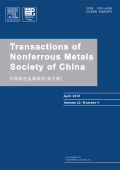
TRANSACTIONS OF NONFERROUS METALS SOCIETY OF CHINA
Advancing knowledge in nonferrous metals and materials science.TRANSACTIONS OF NONFERROUS METALS SOCIETY OF CHINA, published by Elsevier, is a premier academic journal that serves as a vital platform for researchers and professionals specializing in materials science, condensed matter physics, geotechnical engineering, and engineering geology. Established in 1994, this esteemed publication has maintained a robust focus on the latest developments in the nonferrous metals sector, reflecting its significant impact in the field with a Q1 categorization across multiple disciplines. With impressive Scopus rankings—placing it in the top 20% of journals in relevant categories—this journal is recognized for its quality and rigor, providing critical insights into metals and alloys, materials chemistry, and their applications. The non-open access format ensures a dedicated readership among professionals and academics seeking substantial and authoritative research articles. By fostering knowledge exchange, the journal strives to advance the understanding and application of nonferrous metals, making it an essential resource for anyone involved in material innovations and engineering solutions.

STRENGTH OF MATERIALS
Bridging theory and practice in material mechanics.STRENGTH OF MATERIALS is a prestigious journal published by SPRINGER that focuses on the critical field of mechanics of materials, providing an authoritative platform for the dissemination of research and developments in material strength analysis since 1969. With an ISSN of 0039-2316 and an E-ISSN of 1573-9325, this journal serves a global audience of researchers, professionals, and students, contributing essential insights into the physical properties and performance characteristics of various materials under stress and strain. As part of the United States' academic literature, it showcases work that not only advances theoretical knowledge but also applies to practical engineering scenarios. Although ranked in the Q4 tier with respect to its category in Mechanics of Materials, with a Scopus rank of #319 out of 398 (19th percentile), it remains an important resource for those looking to expand their understanding in this specialized area. Researchers can access a wealth of information through this journal, fostering continued innovation and interdisciplinary collaboration.
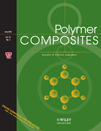
POLYMER COMPOSITES
Championing Excellence in Polymer CompositesPOLYMER COMPOSITES, published by WILEY, is a leading journal dedicated to advancing the fields of materials science and engineering through the exploration of polymer composite materials. With its foundation dating back to 1980, this esteemed journal has continuously provided a platform for researchers to publish high-quality studies and innovative methodologies in areas such as ceramics, composites, and miscellaneous chemistry. Ranked in the prestigious Q1 quartile for sectors like Polymers and Plastics as well as Materials Chemistry, POLYMER COMPOSITES stands significant within the academic community, holding a notable impact factor that reflects its influence. The journal encompasses a comprehensive range of topics, making it essential reading for professionals, researchers, and students aiming to stay at the forefront of developments in polymer science and composite technologies. Although it does not currently offer Open Access, readers can access its impactful publications through institutional or individual subscriptions, contributing to ongoing advancements in the field and facilitating the exchange of valuable knowledge among scientists and engineers worldwide.
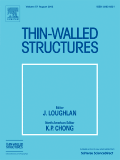
THIN-WALLED STRUCTURES
Connecting Theory with Practical Engineering ApplicationsTHIN-WALLED STRUCTURES is a premier international journal published by Elsevier Science Ltd, focusing on the critical areas of Building and Construction, Civil and Structural Engineering, and Mechanical Engineering. With an impressive impact factor and categorization in the Q1 quartile of each respective field, this journal stands at the forefront of engineering research, boasting commendable Scopus rankings—52nd for Mechanical Engineering, 18th for Building and Construction, and 32nd for Civil and Structural Engineering. Since its inception in 1983, THIN-WALLED STRUCTURES has provided a vital platform for disseminating innovative research, practical applications, and theoretical advancements in thin-walled structures, encouraging the development of safer and more efficient design methodologies. Although it operates on a traditional access model, the journal is committed to maintaining high-quality peer review and publishing, making it an essential resource for researchers, professionals, and students aiming to contribute to and benefit from the latest advancements in this dynamic field.
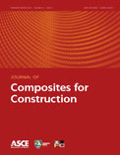
JOURNAL OF COMPOSITES FOR CONSTRUCTION
Unveiling New Horizons in Composite Materials for ConstructionThe JOURNAL OF COMPOSITES FOR CONSTRUCTION, published by the American Society of Civil Engineers (ASCE), is a premier scholarly journal dedicated to the advancement of knowledge in the use of composite materials for construction purposes. Since its inception in 1997, the journal has established a strong reputation with an impressive impact, holding a Q1 ranking across multiple categories, including Building and Construction, Ceramics and Composites, and Civil and Structural Engineering. With its broad scope, this journal welcomes innovative research articles that showcase new techniques, applications, and theoretical advancements in composite materials. Although it currently does not offer open access, the journal provides vital insights and rigorous peer-reviewed content, ensuring its relevance to researchers, practitioners, and students pursuing cutting-edge developments in the field. The journal is vital for anyone seeking to stay informed about the latest trends and research in composite materials and their application in the construction industry.
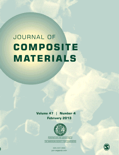
JOURNAL OF COMPOSITE MATERIALS
Connecting Researchers and Professionals in CompositesJOURNAL OF COMPOSITE MATERIALS, published by SAGE PUBLICATIONS LTD, is a premier academic journal dedicated to advancing the field of composite materials. With a long-standing history since 1967, this journal serves as a vital platform for researchers and professionals in the areas of ceramics and composites, materials chemistry, mechanical engineering, and mechanics of materials. The journal's impact is further underscored by its Q2 quartile ranking in various categories as of 2023, alongside notable Scopus rankings in multiple engineering and material science disciplines. Though it currently lacks Open Access options, its rigorous peer-review process ensures the high quality and relevance of its published research. This journal is instrumental in fostering innovation and promoting collaboration among academics and industry professionals, making it essential reading for anyone involved in materials science and engineering.
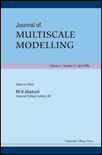
Journal of Multiscale Modelling
Pioneering Research in Modeling and SimulationWelcome to the Journal of Multiscale Modelling, a reputable publication dedicated to advancing the fields of Modeling and Simulation and Computer Science Applications. Published by World Scientific Publishing Co Pte Ltd in Singapore, this journal serves as a vital resource for researchers, professionals, and students seeking to explore the intricate relationships between various scales of modeling systems. Since its inception in 2009, the journal has established a pivotal role within the academic community, evidenced by its Q4 ranking in both its respective categories and its interests in contributing to the understanding of complex systems through innovative simulation techniques. With an ISSN of 1756-9737 and an E-ISSN of 1756-9745, the journal encourages submissions that push the boundaries of current knowledge and methodologies. Though currently not open access, articles published in this journal are recognized for their scholarly rigor and innovation, aiming to foster collaboration across disciplines and enhance the practical applications of multiscale modeling techniques in various industries. Join us in exploring the vast potentials of multiscale modeling that lie ahead.
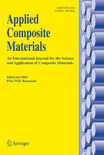
APPLIED COMPOSITE MATERIALS
Pioneering Research for Tomorrow's CompositesAPPLIED COMPOSITE MATERIALS is a leading peer-reviewed journal published by Springer, dedicated to advancing the field of composite materials and their applications. With an ISSN of 0929-189X and E-ISSN of 1573-4897, this journal serves as an essential resource for researchers, professionals, and students interested in the innovative approaches and technological progress within the realm of composite materials. Based in the Netherlands, APPLIED COMPOSITE MATERIALS is recognized in the 2023 Scopus rankings, holding a prestigious Q2 quartile position in the Ceramics and Composites category, further exemplifying its impact with a rank of #59 out of 127 in materials science. The journal has been at the forefront of composite material research since its inception in 1994 and continues to offer open access to high-quality publications that address both theoretical and practical applications in the field. Researchers can count on this journal to disseminate cutting-edge findings and foster collaboration, driving innovation in composite material development.
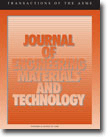
JOURNAL OF ENGINEERING MATERIALS AND TECHNOLOGY-TRANSACTIONS OF THE ASME
Advancing the frontier of engineering materials and technology.JOURNAL OF ENGINEERING MATERIALS AND TECHNOLOGY-TRANSACTIONS OF THE ASME is a premier journal published by the American Society of Mechanical Engineers (ASME), dedicated to advancing the field of engineering materials and technology. With an ISSN of 0094-4289 and E-ISSN 1528-8889, this journal has provided invaluable insights since its inception in 1973. Operating from its headquarters in New York, United States, it serves a global audience of researchers, professionals, and students alike. The journal is recognized for its rigorous peer-review process and its commitment to disseminating high-quality research, currently holding a Q3 quartile ranking across multiple categories including Condensed Matter Physics, Materials Science, Mechanical Engineering, and Mechanics of Materials. With a focus on exploring innovative materials and their applications, it aims to foster collaboration and discovery in the engineering community. Although it is not an open-access journal, it continues to play a vital role in shaping the future of engineering materials research up to 2024. Researchers and practitioners will find in this journal a significant platform to support the development and understanding of engineering materials, making contributions that resonate through academia and industry.